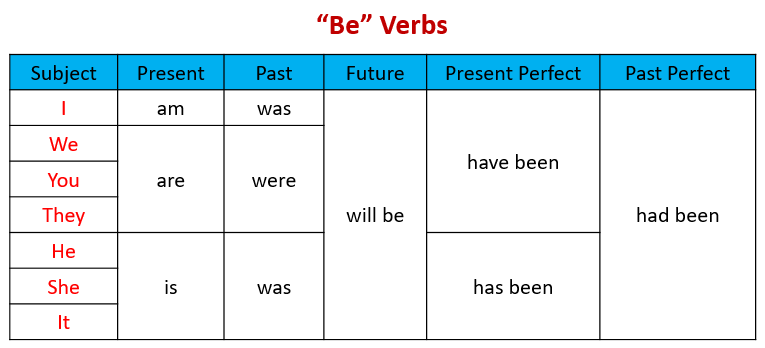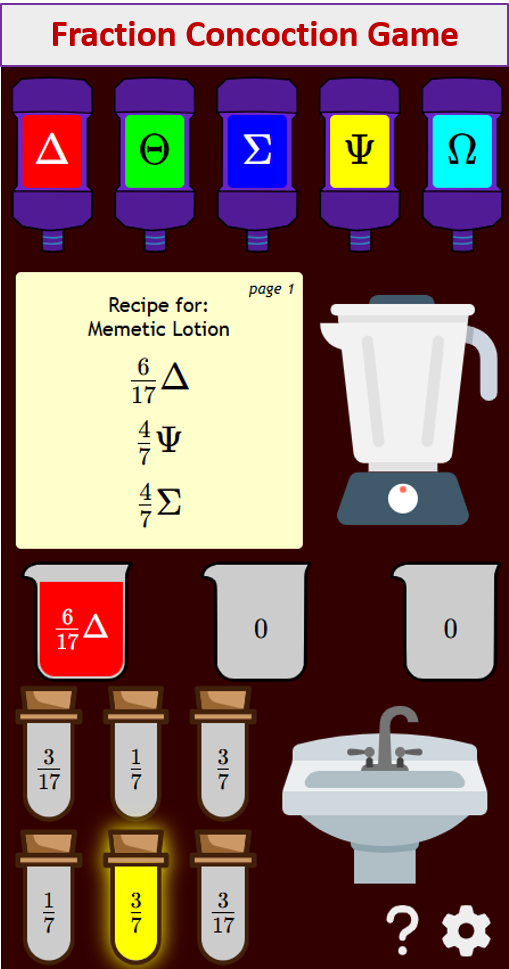The Verb "Be"
Related Pages
Verbs: Simple Present Tense
Simple Past Tense For Irregular Verbs
IELTS, TOEFL And English As A Second Language
More Lessons On English Grammar
In these lessons, we will look at the present tense, past tense, future tense, present perfect tense, and past perfect tense of the verb be.
“Be” verbs are a crucial part of English grammar. They’re used in various ways, including linking the subject of a sentence to a description or state of being, and as auxiliary (helping) verbs to form other tenses.
Forms of “Be”:
The verb “be” is irregular, meaning it doesn’t follow the standard “-ed” pattern for the different tenses.
The following table gives “be” verbs in different tenses: past, present, future, present perfect, and past perfect. Scroll down the page for more examples and explanations.

- “Be” is an irregular verb with many forms.
- It’s used as a linking verb, an auxiliary verb in continuous tenses and the passive voice, and in imperatives.
- Understanding “be” verbs is crucial for forming grammatically correct sentences in English.
-
Verbs & Tenses
Verbs Action Verbs, Linking Verbs and Auxiliary Verbs
The Verb “Be” Present Tense, Past Tense, Present Perfect Tense
Simple Present Tense
Simple Past Tense Regular Verbs
Simple Past Tense Irregular Verbs
Simple Future Tense
Past Participle
Present Perfect Tense
Past Perfect Tense
Future Perfect Tense
Present Participle
Present Continuous Tense
Past Continuous Tense
Future Continuous Tense
Present Perfect Continuous Tense
Past Perfect Continuous Tense
Future Perfect Continuous Tense
Summary of Verb Tenses
Modal Verbs
Modal Verbs Examples can, could, must, may, might, should, will, would, and ought to.
Verb “Be” (present tense) – is, are, am
The words am, is and are form the present tense of the verb be.
We use am with the pronoun I, is with the pronouns he, she, it and are with the pronouns you, we and they.
Singular |
Plural |
I am |
We are |
You are |
You are |
He is |
They are |
She is |
|
It is |
|
Examples:
I am busy.
He is a good swimmer.
She is a teacher.
It is very fierce.
You are early.
You are all welcome.
We are home.
They are good friends.
The following tables give the affirmative forms and negative forms of am, is and are and their corresponding contractions or short forms. Contractions are usually used in spoken English and are not recommended for formal written English.
Affirmative Forms
|
Contraction (Short Form) |
I am |
I’m |
You are |
You’re |
She is |
She’s |
He is |
He’s |
It is |
It’s |
We are |
We’re |
They are |
They’re |
Negative Forms
|
Contraction (Short Form) |
I am not |
I’m not |
You are not |
You’re not / You aren’t |
She is not |
She’s not / She isn’t |
He is not |
He’s not / He isn’t |
It is not |
It’s not / It isn’t |
We are not |
We’re not / We aren’t |
They are not |
They’re not / They aren’t |
Verb “Be” (past tense) – was, were
The words was and were form the past tense of the verb be.
Affirmative Forms
Singular |
Plural |
I was |
We were |
You were |
You were |
She was |
They were |
He was |
|
It was |
|
Negative Forms
|
Contraction (Short Form) |
I was not |
I wasn’t |
You were not |
You weren’t |
She was not |
She wasn’t |
He was not |
He wasn’t |
It was not |
It wasn’t |
We were not |
We weren’t |
They were not |
They weren’t |
Verb “Be” (present perfect tense) – has been, have been
The words has been and have been form the present perfect tense of the verb be.
Singular |
Plural |
I have been |
We have been |
You have been |
You have been |
She has been |
They have been |
He has been |
|
It has been |
|
Verb Be in the present tense. Affirmative and negative forms.
This video shows the verb Be in the past tense. Affirmative and negative forms.
This video shows how to make yes-no questions and answers in the past tense using the verb be.
This video explains how to use the verb be in the present perfect tense.
Try out our new and fun Fraction Concoction Game.
Add and subtract fractions to make exciting fraction concoctions following a recipe. There are four levels of difficulty: Easy, medium, hard and insane. Practice the basics of fraction addition and subtraction or challenge yourself with the insane level.

We welcome your feedback, comments and questions about this site or page. Please submit your feedback or enquiries via our Feedback page.